
The energy transition is also a transition of raw materials. When we imagine a sustainable future, we conceive it based on a series of strategic sectors such as renewable energies or electric mobility. Similarly, we imagine a connected and digital future, where new innovations and business models related to the fourth industrial revolution allow us to solve global challenges such as food shortages or access to education. In short, we focus on technologies that help us improve our quality of life.
Why are critical minerals important?
These sectors depend on a series of key technologies, such as energy storage batteries, wind turbines, solar panels, electrolyzers, drones, robots, data transmission networks, electronic devices and space satellites. These are technologies that in recent years have undergone a great technological evolution and an enormous growth in demand worldwide. If we analyze the development forecasts to 2030, we can expect annual growth of at least double digits for many of them, as shown in Figure 1.

Figure 1: Expected growth up to 2030 of some of the key technologies for strategic sectors. Source: McKinsey (image 1, image 2, image 3)
However, as can be seen in Figure 2, many of these future technologies are highly dependent on a set of critical raw materials necessary for their development. Indium and gallium are key to the manufacture of energy-efficient LED lighting, silicon is indispensable for the manufacture of microchips and semiconductors, and the platinum group of metals (such as iridium, palladium, platinum rhodium or ruthenium) are used in catalysts for hydrogen electrolyzers.

Figure 2: Semi-quantitative representation of raw material flows to the fifteen key technologies and five strategic sectors. Source: JRC Study
So, when does a material become critical? There are several factors that allow us to determine whether a raw material is considered critical:
- Its world reserves are scarce
- There are no alternative materials that can perform their function (their properties are unique or very unique).
- They are indispensable materials for key economic sectors of the future, and/or their supply chain is high-risk.
In the words of Margrethe Vestager, Executive Vice-President of the European Commission, "without a secure and sustainable supply of critical raw materials, there will be no green (sustainable) and industrial transition".
Research into sources of critical minerals data
In order to know in detail the situation of public minerals in Europe, we need to locate quality data. A task for which we will have to look into several sources.
First of all, we go to the European open data portal. From its search engine, in a first iteration, we see that there are more than 46,000 datasets for the query "critical raw materials" (Figure 3).
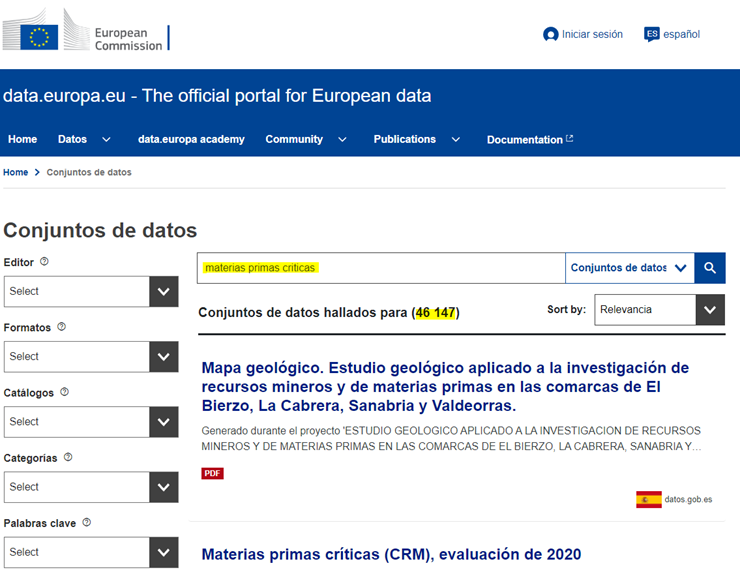
After a first analysis of the available data categories, we adjusted the filters until we narrowed down the datasets of interest to 190 (Figure 4). Particular attention is drawn to the data published by the JRC (European Commission Joint Research Center) and, in particular, to the dataset entitled Critical Raw Materials (CRM), 2020 assessment.
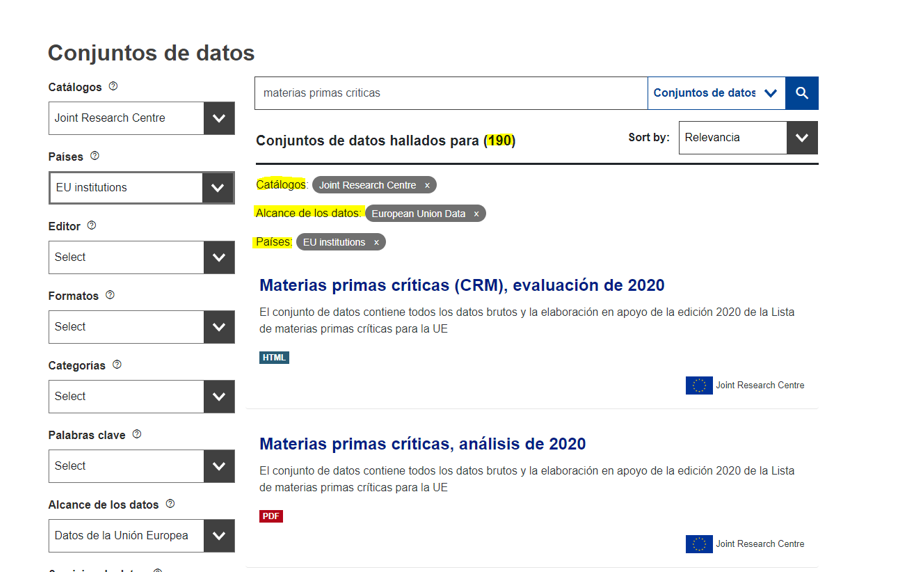
Figure 4: Second search for critical raw materials in the European data portal.
This dataset contains a direct link to a web portal, the RMIS (Raw Material Information System), which is actually the European Commission's reference knowledge base on raw materials through which we can access very relevant data and analysis.
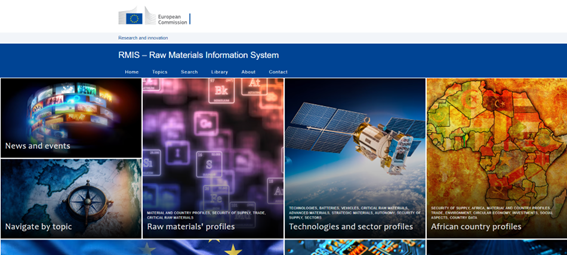
Figure 5: RMIS - European Commission's knowledge base for raw materials
Through the RMIS, we find a very interesting publication for any study on the subject. Although this publication is in PDF format, it allows us to access the list of strategic, critical and non-critical materials identified by the European Commission indicating their level of criticality and their use in different key technologies as shown in Figure 6.

Figure 6: Table of strategic, critical and non-critical raw materials used different key technologies contained in the PDF file. Source: Supply chain analysis and material demand forecast in strategic technologies and sectors in the EU - A foresight study, JRC 2023.
Continuing our exploration, in this case in search of data on mineral reserves in the European continent, we found the European Gelological Data Infrastructure (EDGI) platform, which has an extensive catalog with more than 5,700 datasets and geological services. In our case, after performing a search in its data catalog, we selected three datasets containing interesting information in terms of findings of critical lithium, cobalt and graphite minerals (Figure 7).

Figure 7: Searching for datasets in the EDGI catalog
From the EDGI viewer, we can view the contents of these three datasets before downloading them in GeoJSON format (Figure 8). The three datasets have been originated from the FRAME project (Forecasting And Assessing Europe's Strategic Raw Materials Needs), in which multiple European entities participate, including the Geological and Mining Institute of Spain (IGME).
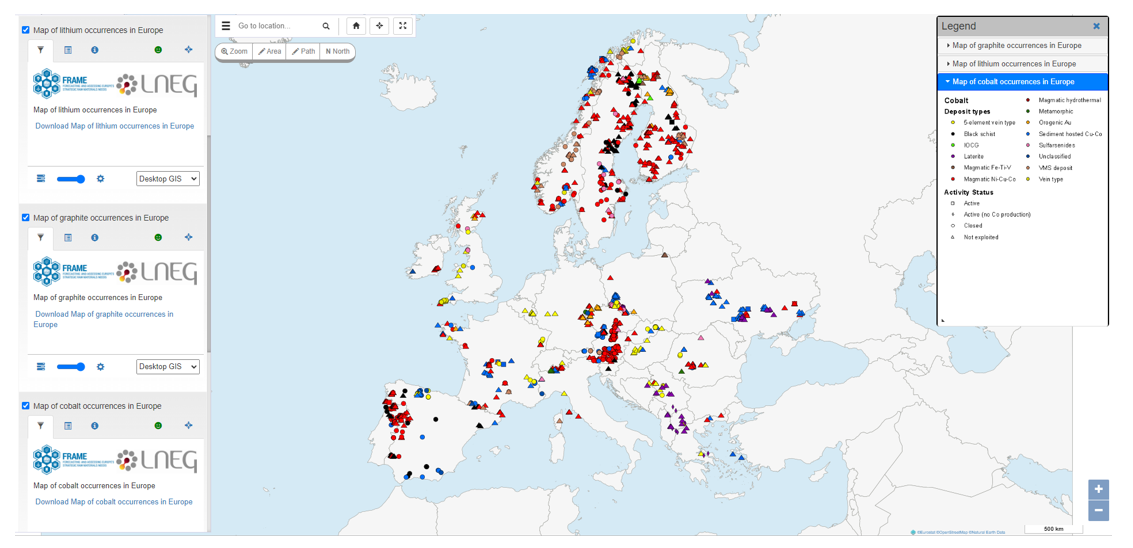
Figure 8: Querying selected datasets through EDGI visualization platform. Source: Map of cobalt occurrences in Europe, Map of graphite occurrences in Europe, Map of lithium occurrences in Europe, FRAME project.
Lastly, we went to the data portal of the International Energy Agency (IEA) (Figure 9). In this case, we found, among its more than 70 datasets, one directly related to our field of research, entitled Critical Minerals Demand Dataset, which we proceeded to download for further analysis in excel format.
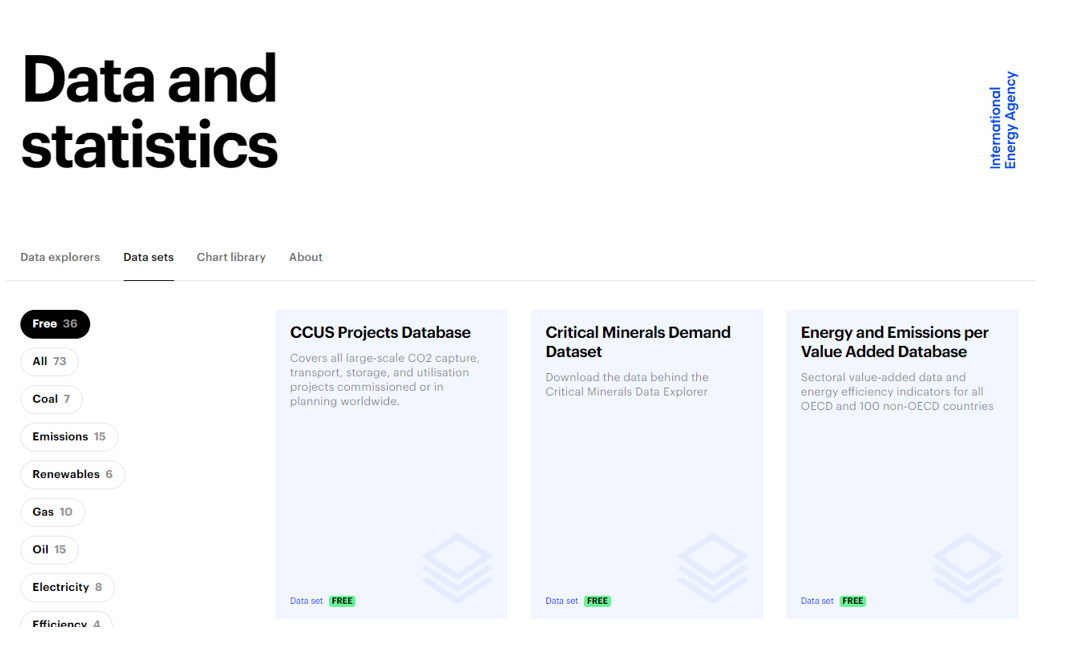
Figure 9: Capture of the International Energy Agency (IEA) data portal.
After this search, we have located some interesting data that can help us to carry out different analyses.
Although this exercise has been carried out under the theme of critical minerals, European open data portals provide a large amount of information and diverse data sets on many areas of interest that can help us understand the challenges we face as a society, from the energy transition to the fight against poverty or food waste. Data that will allow us to carry out analyses aimed at making better decisions to move towards a more prosperous and sustainable future.
Content elaborated by Juan Benavente, industrial engineer and expert in technologies linked to the data economy. The contents and points of view reflected in this publication are the sole responsibility of the author.